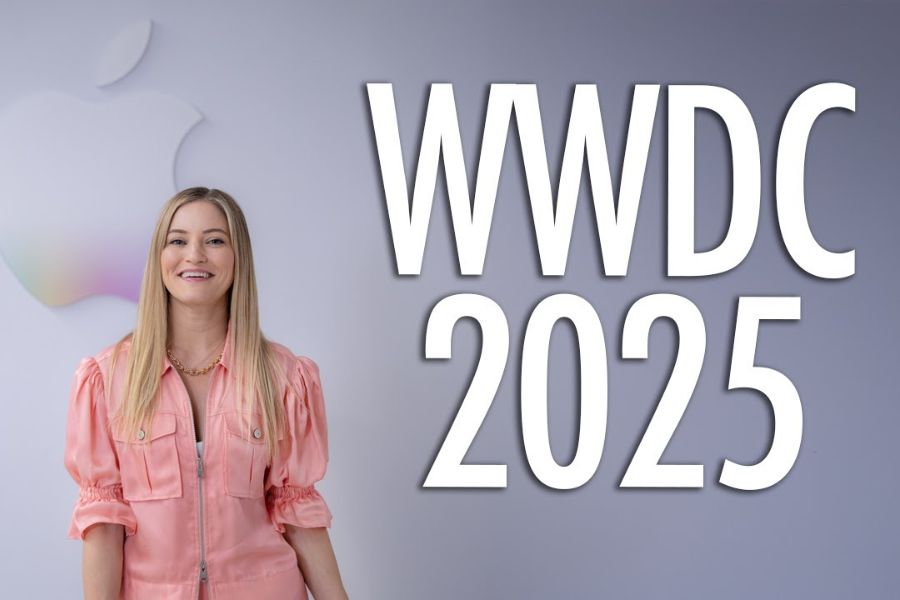Each year, Apple’s Worldwide Developers Conference (WWDC) serves as a glimpse into the company’s strategic direction for the coming year. From software innovations and developer tools to hardware sneak peeks and AI breakthroughs, WWDC 2025 was one of the most anticipated events in recent memory. This year, Apple did not disappoint.
Held as a hybrid event at Apple Park in Cupertino and streamed globally, WWDC 2025 featured a series of major announcements that not only redefine Apple’s ecosystem but also show how seriously the company is taking artificial intelligence, mixed reality, and personalized computing.If you missed the event or simply want a full, in-depth breakdown, here is everything you need to know about WWDC 2025.
1. Apple Intelligence: The Star of the Show
Perhaps the most important announcement this year was the introduction of Apple Intelligence, Apple’s all-new AI framework that integrates deeply into iOS, iPadOS, and macOS.
Unlike many other generative AI models that rely heavily on cloud computing, Apple Intelligence is optimized for on-device processing, which aligns with Apple’s long-standing emphasis on privacy. It uses a hybrid model where private data is handled locally and more complex queries are offloaded to Apple’s secure cloud servers.
Key AI capabilities include:
- Smart Summaries in Mail and Safari for articles, emails, and web pages
- Contextual Suggestions for Calendar, Notes, and Reminders based on your behavior
- Writing Tools in native apps like Messages and Notes that assist with tone, grammar, and clarity
- Image Generation through a feature called Image Playground, allowing users to create illustrations based on prompts
This system-wide AI framework is available across iPhone, iPad, and Mac devices running the newest operating systems.
2. iOS 19: Customization and Privacy at the Core
iOS 19 represents a refined, user-centered evolution of the iPhone operating system. While not a massive visual redesign, the update brings some of the most requested features from users and developers.
Notable updates include:
- Dynamic Lock Screens that adapt based on location, time of day, and usage patterns
- App Privacy Labels 2.0, providing real-time data tracking information and permissions history
- Offline Siri, a long-awaited feature allowing voice commands to function even without an internet connection
- AI-Powered Keyboard, with predictive text and inline suggestions now much faster and contextually smarter
Additionally, battery efficiency has been optimized for older models, ensuring iOS 19 is compatible and smooth on devices as old as the iPhone 12.
3. macOS Sequoia: Productivity and Continuity Enhanced
The latest macOS release is called Sequoia, following Apple’s tradition of naming its desktop systems after iconic California landmarks.
Key highlights of macOS Sequoia include:
- iPhone Mirroring, allowing users to fully control their iPhone from a Mac screen, even replying to messages and viewing live apps
- Window Tiling and Snap Layouts, bringing more advanced multitasking similar to what Windows users have enjoyed for years
- Apple Intelligence Integration across apps like Safari, Pages, and Mail
- Game Mode Expansion, which reduces background tasks and latency for a better gaming experience
Developers are also gaining a refreshed Xcode version with faster compile times and tighter SwiftUI integration.
4. iPadOS 19: Desktop-Level Features for the iPad
iPadOS continues its slow but steady evolution into a true productivity powerhouse. With iPadOS 19, Apple has finally blurred the line between tablet and laptop.
Major updates include:
- Pro App Support, with Final Cut Pro and Logic Pro now offering more features previously exclusive to macOS
- Multi-User Support, finally allowing more than one profile per device, ideal for family and education use
- Resizable App Windows, making multitasking more intuitive and flexible
- Apple Intelligence Toolkit, allowing iPad apps to utilize AI directly without third-party support
Combined with the M3 iPad Pro’s hardware power, these updates make the iPad a compelling option for professionals and creatives alike.
5. watchOS 11 and Health+ Advancements
Apple’s continued focus on health was front and center with watchOS 11. The update introduces several health and fitness tools that align with Apple’s vision of preventative care and personal wellness.
New features include:
- Training Load and Recovery tracking, similar to features seen on dedicated fitness devices
- Mental Wellness Check-In, allowing users to log mood, triggers, and trends in a journal format
- Sleep Stage Detection Accuracy Boost, offering more precise readings based on a new neural engine model
- AI-Powered Workout Suggestions, tailoring routines to your goals and recovery status
These features aim to keep Apple Watch at the top of the fitness wearable category, pushing it further into serious athletic use.
6. VisionOS 2: The Future of Spatial Computing
Apple’s Vision Pro headset, while not yet mainstream, continues to evolve. With visionOS 2, Apple is focusing on making spatial computing more intuitive, useful, and accessible to a broader audience.
Upgrades include:
- Spatial Gestures Library, making controls more natural and less reliant on physical gestures
- Mac Display Extension, allowing the Vision Pro to serve as a full 3D virtual display for your Mac
- AI Environment Mapping, which personalizes backgrounds and lighting based on your surroundings
- Developer Toolkit for Mixed Reality Apps, encouraging more third-party apps beyond just entertainment and games
Though Vision Pro remains a premium device, Apple’s investment shows its long-term ambition in the AR and spatial computing space.
7. New Developer Tools and SDKs
As expected, Apple introduced several SDKs and APIs aimed at enhancing developer flexibility and application capabilities. With AI playing a major role in every part of the WWDC keynote, developers are now being encouraged to build Apple Intelligence into their apps.
Highlights include:
- Swift Assist, a built-in AI companion inside Xcode for helping write, debug, and optimize code
- App Intents API Expansion, offering smarter Siri and Shortcut integration
- TestFlight AI Testing, which generates automated stress tests for new features before public rollouts
These tools show Apple’s focus on enabling developers to take full advantage of its tightly integrated ecosystem.
8. No New Hardware, But a Clear Roadmap
Unlike some previous years, Apple did not use this WWDC to unveil new hardware devices. However, it did tease upgrades coming later in the year for products like the MacBook Pro, Vision Pro, and possibly new AI-centric hardware.
This suggests Apple is holding its major hardware releases for a dedicated fall event, a strategy that keeps WWDC focused purely on software, systems, and developer growth.
Conclusion:
WWDC 2025 was not just about new software versions—it marked a shift in how Apple is thinking about its entire ecosystem. The launch of Apple Intelligence signals a strong move into the AI era, but on Apple’s own terms—privacy-first, deeply integrated, and user-centric.
By refining iOS, macOS, iPadOS, and visionOS with meaningful features and giving developers powerful new tools, Apple is clearly investing in the future of its platforms. Whether you’re a casual user, a developer, or someone who’s just interested in where tech is going, WWDC 2025 was a reminder that Apple still has a firm grip on the direction of digital innovation.


